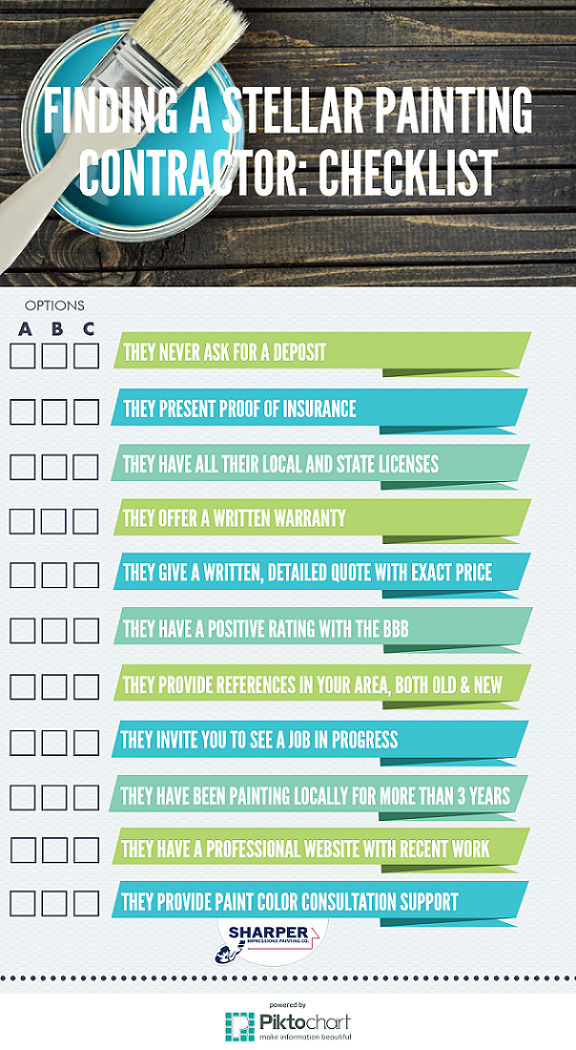Understanding How Paint Choices Impact Your Feelings: The Psychology Behind Color Selections
Understanding How Paint Choices Impact Your Feelings: The Psychology Behind Color Selections
Blog Article
Content Written By-Ingram Key
When it comes to choosing paint colors for a room, the selections made extend past plain aesthetic appeals. The psychology of shade looks into just how different hues can influence our emotions and psychological health, forming the ambiance of a space in extensive ways. Understanding the influence of shade on mood can cause willful and tactical design decisions that accommodate boosting numerous facets of our day-to-days live. By discovering residential house painters in between color and psychology, one can uncover the subtle yet powerful ways in which repaint selections impact our psychological experiences within an offered environment.
The Effect of Color on Emotions
Often, the shades we surround ourselves with can considerably affect our emotion and general health. The influence of shade on feelings is a well-researched field within psychology and interior decoration.
Warm shades like red, orange, and yellow are understood to stimulate sensations of power, warmth, and convenience. These tones can promote conversation and create a relaxing atmosphere in a room.
On the other hand, cool colors such as blue, green, and purple have a tendency to have a calming impact, advertising leisure and serenity. These shades are frequently favored in rooms and offices to develop a sense of tranquility.
In addition, the strength and saturation of shades play a critical function in identifying their emotional influence. Bright, lively shades can generate sensations of excitement and enthusiasm, while soft tones are much more relaxing and mild.
It is important to take into consideration the preferred psychological response when selecting paint colors for various areas in your home or office. By understanding the psychology of shade, you can produce environments that support your psychological well-being and enhance your general mood.
Picking the Right Paint Colors
Recognizing the psychology of color and its impact on emotions can guide individuals in picking the best paint shades for their space. When choosing top painting contractors in the us , it's important to take into consideration the mood you want to produce in each area.
For example, calming shades like blue and eco-friendly are suitable for bed rooms and relaxation areas, as they advertise a sense of tranquility. On the other hand, vivid tones like yellow or red can stimulate and promote conversation in social spaces such as living areas or dining areas.
Along with the emotional influence, the size and illumination of a room need to also influence color choices. Lighter colors can make a tiny room really feel even more spacious, while darker tones can add warmth and coziness to larger locations. https://interior-painter-near-me44332.dailyhitblog.com/39310736/are-you-ready-to-uncover-expert-suggestions-for-a-smooth-collaboration-with-home-painters-that-will-make-your-paint-job-a-trouble-free-experience improves the way colors appear, so it's crucial to evaluate paint samples in various illumination conditions prior to making a decision.
Eventually, selecting the best paint shades entails a thoughtful factor to consider of both psychological feedbacks and functional elements to develop an unified and comfy living atmosphere.
Producing the Preferred Ambience
Accomplishing the preferred environment in a space includes a strategic mix of shade options and lights factors to consider. Color plays a vital function in establishing the state of mind of a space. Cozy tones like reds, oranges, and yellows can develop a cozy and inviting environment, perfect for spaces where convenience is key, such as living spaces or bedrooms.
On the other hand, great shades like blues and greens stimulate a sense of calmness and relaxation, making them perfect for locations where tranquility is preferred, like restrooms or meditation rooms.
In addition to color, illumination is an additional crucial consider forming the setting of a room. Soft, cozy lights can boost the heat of a room, while intense, trendy illumination can energize and boost the mood. Dimmer buttons or adjustable illumination components give adaptability, allowing you to adapt the illumination to fit different tasks or state of minds throughout the day.
Conclusion
In conclusion, the psychology of color shows the significant impact paint selections can have on our mood and emotions within a room.
By recognizing exactly how different colors stimulate specific sensations and picking paint colors appropriately, we can create atmospheres that advertise power, comfort, relaxation, or enjoyment.
Thoroughly selecting the appropriate colors can assist us to affect our emotion and overall well-being in an offered room.
